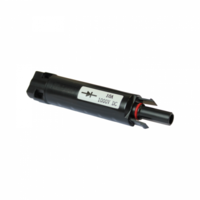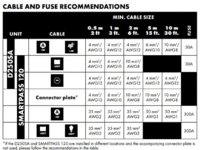Ok so I have a CTEK 250 from travelvolts and I’m now looking to hook a solar panel into it,
when installing the ctek Martin provided 2 long solar cables which I have ran from the front seat down the side of the van and out through the back lights and these terminate in 2 connectors that I presume will plug into the solar panel.
My thinking is though that I should have a fuse just after the panel to protect against the cable from the panel to the controller shorting if it rubs through to the van chassis for any reason as it’s a long unprotected run, Is this correct? I haven’t seen this in any installs but in my mind it’s needed?
Secondly I want to mount the solar panel on the roof rack between the 2 bars so I guess I’ll need a solid panel? Or is it best to get a semi flexible one and mount it on a sheet? I don’t want it to vibrate at speed.
On the travelvolts site I only see a flexi panel so thought I would ask here first before contacting Martin again
Cheers
Justin
when installing the ctek Martin provided 2 long solar cables which I have ran from the front seat down the side of the van and out through the back lights and these terminate in 2 connectors that I presume will plug into the solar panel.
My thinking is though that I should have a fuse just after the panel to protect against the cable from the panel to the controller shorting if it rubs through to the van chassis for any reason as it’s a long unprotected run, Is this correct? I haven’t seen this in any installs but in my mind it’s needed?
Secondly I want to mount the solar panel on the roof rack between the 2 bars so I guess I’ll need a solid panel? Or is it best to get a semi flexible one and mount it on a sheet? I don’t want it to vibrate at speed.
On the travelvolts site I only see a flexi panel so thought I would ask here first before contacting Martin again
Cheers
Justin






